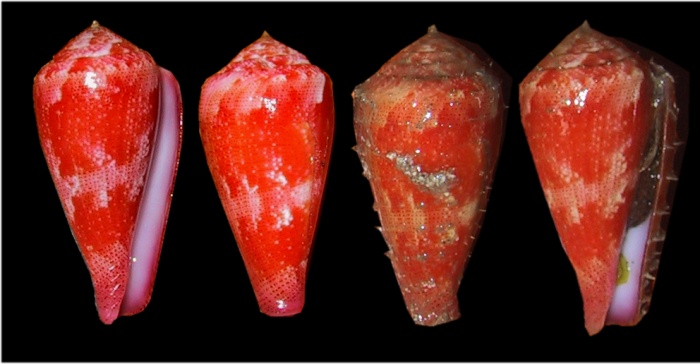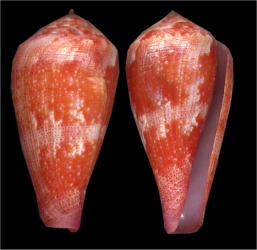Conus legatus & Conus pertusus from Tahiti
Author : Touitou David, 2004
Conus legatus Lamarck, 1810
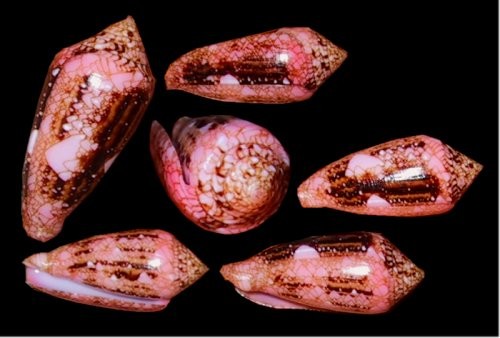
|
Conus legatus, Iindo-Pacific specie, is a really collector's appreciated coneshell. Maybe for it's pretty pink color. I personally love this specie. It is a rare coneshell. Here, in Tahiti, it can be found outside the reef or in the lagoon under small dead corals plates. It's habitat seems to start around 12 meters, however they have been found in only one meter of water, near the edge of the reef.
|
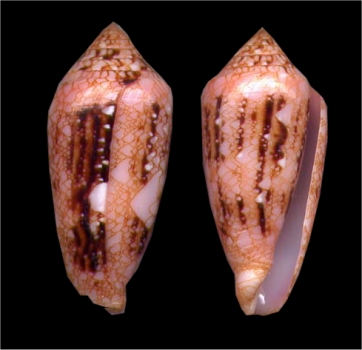
|
Normally they are small shells, but shells found at more than 40mm, can be considerated as very big ones. I know that in La Reunion Island (Indian Ocean) it can easily reach 50mm (sometime 60mm). But here in Tahiti,
The periostracum is thin, and you can guess it's beautiful colors even live (check the picture). |

|
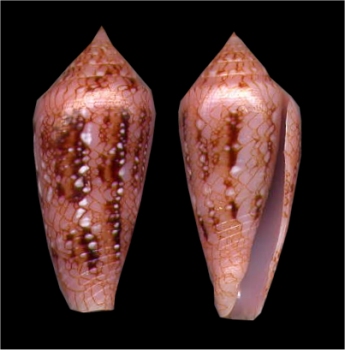
|
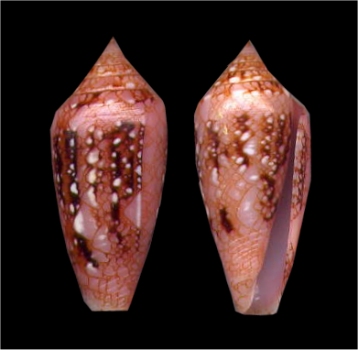
|
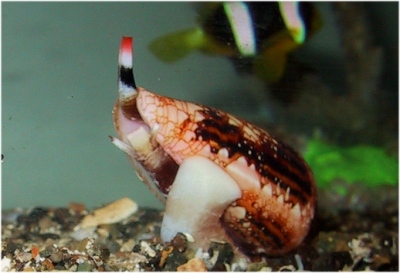
|
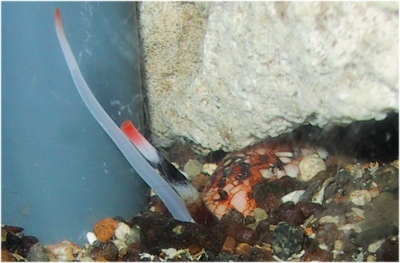
|
Conus pertusus Hwass, 1792
|
|
Conus pertusus, indo-pacific specie, is a really collector's appreciated coneshell. Maybe for it's marvelous red color when freshly collected. I personally love this specie. It remains a rare coneshell though. Here, in Tahiti it can be found outside the reef or in the lagoon on coral pilings. It's habitat seems to start near 10 meters. So it is often found while scuba. It only hunts at night. It is difficult to find it GEM. I guess it's color makes it easy to spot by shell predators… Here, in Tahiti, the shells are really nice, with a lot of white spots. Often nicer than all the ones i saw from Philippines for example. It is a small shell, but you can find nice ones around 40mm.
The periostracum is pale, and you can see it's beautiful colors even live (check the picture above). |
